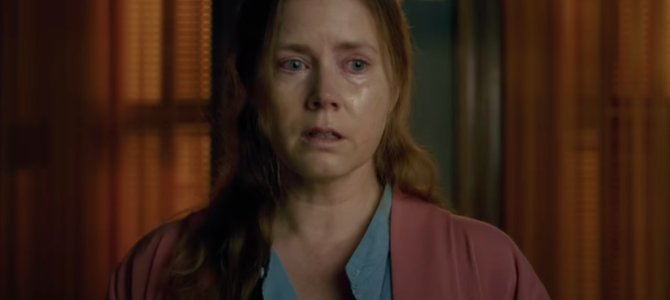
Can a good story, talented team, and compelling themes coalesce into a bad movie? Surprisingly, yes, as with Netflix’s thriller “The Woman in the Window.”
An agoraphobic, recently separated woman named Anna (Amy Adams) spends her days spying on neighbors through a camera lens and her nights in the cool glow of classic Hollywood movies. When she thinks she witnesses her new neighbor kill his wife, Anna’s already fractured mental state begins to unravel.
If this sounds a whole lot like Alfred Hitchcock’s masterpiece “Rear Window,” that’s because it is. However, director Joe Wright fails to understand what makes the classic movie, or any thriller, for that matter, work on a fundamental level.
To successfully demonstrate a dangerous change to the status quo, the outset needs to demonstrate some stability. Yet “The Woman in the Window” creates a sense of unease right from the beginning.
Relatively minor instances, such as Anna’s house being egged or her tenant coming home, are treated as frightening ordeals. If everything is absolutely terrifying, eventually nothing is. You become desensitized. The problem reaches a point where it becomes confusing whether sequences later in the film are meant to seem threatening and concerning, or whether Wright’s direction and Danny Elfman’s score are overselling the fear potential again.
By the time the plot kicks into gear, there is nowhere to go. The status quo has already reached maximum tension, leaving an unsatisfying arc. While I am wildly in favor of films that create a potent atmosphere, it must be earned.
The mistreatment of suspense pairs with baffling plot points to frustrating results. Characters are set up as potentially important, only for the narrative threads to be dropped. Moreover, having the agoraphobic protagonist leave her house 30 minutes into a 100-minute movie was an unusual choice, to say the least. Suddenly, that which chained her to the apartment setting has been lifted. We as the audience know she can leave, rendering her confinement baffling as opposed to sympathetic.
Adams creates a strong portrayal of an unstable woman grappling with her delusions and doubt. Her terror is palpable throughout the movie’s runtime. Yet Anna is the only character with any form of complexity. Adams imbues her with nuance and depth sorely lacking from the rest of the film.
This film wastes storied actors Gary Oldman, Julianne Moore, and Jennifer Jason Leigh in thanklessly one-note roles, never allong them to break free from the stock archetypes of the cruel suspect, damaged free spirit, or repressed wife respectively.
In a good mystery thriller, the final confrontation should be both the narrative and emotional climax of the story, and “The Woman in the Window” had all the makings of a thrilling conclusion, a solid twist that pulls together Anna’s journey alongside that of the central murder mystery. Instead, poor choreography and out-of-place gore destroyed what could have been an engaging moment.
There are some cool visuals to demonstrate Anna’s fracturing mental state, especially in one major reveal at the film’s midpoint. These images, blurring reality and hallucination, help bring viewers into the protagonists’ mental state and create a unique style.
That is, they would have this effect if they occurred more than a few times. Had the film committed to a unique style, it could have been an enjoyably individual film, rather than a failed attempt to be a Hitchcock movie.
With an opening staircase shot clearly referencing “Vertigo” and stop-motion shots of Jimmy Stewart, Wright is clearly attempting to put viewers in a Hitchcockian state of mind from the get-go. Unfortunately, he fails to imbue the story with the requisite compelling characters and mounting tension.
Other films and shows have captured the Master of Suspense’s broader feel. “Shutter Island,” “Mulholland Drive,” and “Stoker” all borrow elements successfully, but the directors and screenwriters make the movies their own. Detective comedy “Psych” was able to brilliantly walk the line between remaining true to their tone while paying homage to Hitchcock’s signature style in one of the show’s greatest season finales. “The Woman in the Window” is not one such offering.
The tragedy of the film is that Wright cannot be Hitchcock, and “The Woman in the Window” is not “Rear Window.” Wright has a style that gorgeously works for costume drama romances like “Anna Karenina,” “Pride and Prejudice,” and “Atonement.” His last collaboration with Gary Oldman, the excellent Winston Churchill biopic “The Darkest Hour,” earned the actor an Oscar.
Here, however, Wright is clearly out of his depth, desperately attempting to mimic someone else’s voice rather than remaining true to his own. Turn on “Rear Window” or one of Wright’s better offerings instead.









